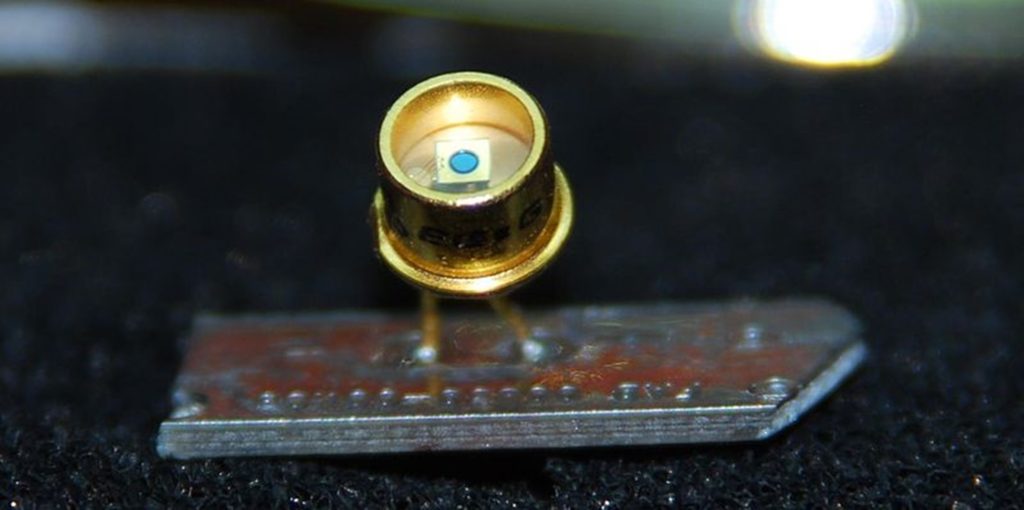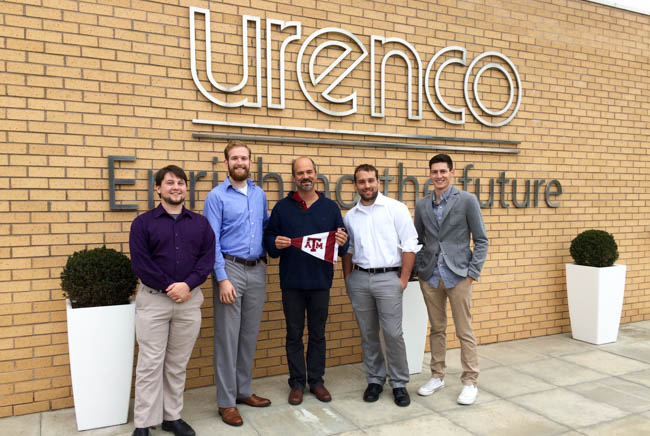
Radiation detectors are often deployed in extreme environments, including areas of high radiation. Radiation can degrade or alter the performance of detectors and their components, compromising their intended function. As part of his dissertation research, Dr. Robert Zedric studied radiation effects on avalanche photodiodes (APDs), special light sensors that can be found in certain types of detectors as well as other applications. A student with the Center for Nuclear Security Science and Policy Initiatives (NSSPI), he was advised by Dr. Sunil Chirayath and Dr. Craig Marianno.
“Radiation effects on APDs are important to understand,” explained Dr. Zedric, “when deploying these devices in satellites, high energy physics, military, and nuclear safeguards applications. I explored the use of APDs in high radiation environments and found that by changing the operational parameters of the devices during irradiation, I could affect the levels of apparent damage.”

Dr. Zedric pursued this research through numerous experiments and simulations and characterized when the damage happened and why. Proton radiation combined with the ion beam-induced charge (IBIC) technique was used to assess displacement damage effects on a commercial APD. Experiments showed that the bias applied during irradiation and the average proton flux had an outsized effect on the apparent levels of damage. Numerous irradiations exhibited increased charge collection in the APD, and this defect-enhanced charge collection (DECM) was observed over a subset of the experiments. When the response to an IBIC pulse was simulated using technology computer-aided design (TCAD) software, it was shown that DECM could be caused by introducing negative defects. The localized distortion of the internal electric field increased the rates of impact ionization and ultimately increased the total collected charge during a pulse. Further simulations showed that DECM during IBIC measurements does not necessarily correlate to an increase in photocurrent during optical stimulation of the APD.
“This work will help promote more effective use of APDs in radiation environments,” Dr. Zedric said. Furthermore, he asserted, “the results from this study are relevant to any device which uses high internal electric fields and is exposed to damaging levels of neutron or charged particle radiation.”
Dr. Zedric graduated with a Ph.D. in nuclear engineering from Texas A&M University in December 2022. Before joining NSSPI, he earned a B.S. in nuclear engineering from the Missouri University of Science and Technology. As a Ph.D. student, he spent time with several national laboratories, the International Atomic Energy Agency (IAEA), and the National Nuclear Security Administration (NNSA). Most of his work has focused on nonproliferation and international safeguards. His research was supported by the Nuclear Nonproliferation and International Safeguards Fellowship from SCUREF and the NNSA Graduate Fellowship. Following graduation, he continued researching the effects of radiation on electronics as a staff scientist at Sandia National Laboratories.
“NSSPI did a terrific job of providing me with experiences in and out of the classroom that helped me grow as a scientist and as a leader,” Dr. Zedric stated. “NSSPI’s many connections and collaborations enabled me to interact with top talent in my field and to learn about safeguards and nonproliferation from numerous perspectives.”
He cites the opportunities for international travel and technical facilities tours as among the most important of the experiences he had as a NSSPI student. “Being an international endeavor, the development and implementation of nuclear safeguards require an understanding of the nuclear fuel cycle of other nations besides the US,” he said.

Dr. Zedric participated in the 2014 3S symposium coordinated by the Tokyo Institute of Technology in Japan, where he gained new insights into how safeguards can be applied for advanced reactors and fuel cycles. This visit also allowed him to meet and interact with a survivor of the bombing of Hiroshima in 1945, which “helped drive home just how important it is to prevent the wartime use of nuclear weapons in the future.” He also participated in the International Nuclear Facilities Experience conducted by NSSPI in the U.K. and had the opportunity to visit nuclear facilities in France, Switzerland, and Austria during his internship at the IAEA.
Back home at Texas A&M, Dr. Zedric said he found tremendous benefits through his involvement with the local student chapter of the Institute for Nuclear Materials Management (INMM). “Through the connections and support of our faculty, INMM brought in numerous speakers and visitors who delivered presentations on and fostered discussion about the most pressing issues in our field.”
In all, he related that his experiences in NSSPI helped round out his education by presenting him with real-world experiences to complement his classroom knowledge.
“These interactions were formative in helping me chart a career path in nuclear engineering.”